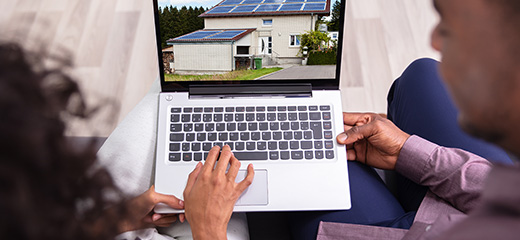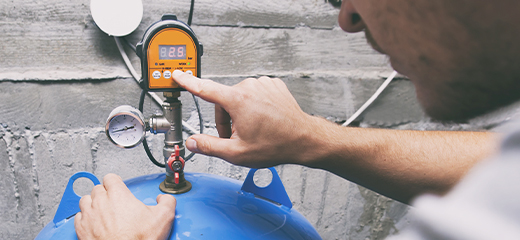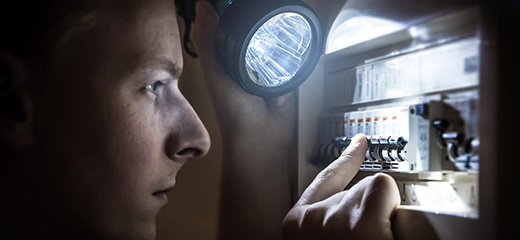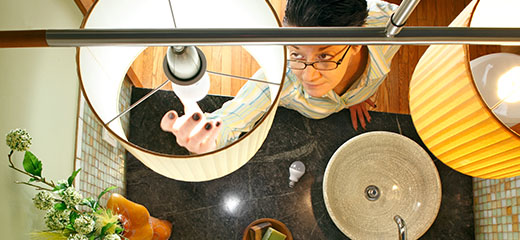
Power your electric geyser with solar and save
Tired of high electricity bills and cold loadshedding showers? Converting your electric geyser to get power from solar panels may be just what your family needs.
Unlike traditional solar geysers that saw specialised geysers installed on the roof that were connected to flat plate collectors or evacuated tubes, a solar conversion makes use of your existing electric geyser and simply changes its power source to normal solar panels.
“The advantage of this approach is that you don’t require expensive plumbing work and you get to benefit from the long lifespan of normal solar panels which typically last as long as 25 to 30 years. What’s more, the conversion allows for the geyser to maintain a connection to the home’s main electricity for backup power during extended periods of cloudy weather,” says Marc du Plessis, executive head of LookSee.
Rethinking solar geysers
For those that have had experiences with traditional solar geysers, the access to backup power is a welcome fix. However, that is not the only issue that has been resolved, says du Plessis.
“Solar geysers had a few problems that households had to deal with. Most important was the heat-loss that resulted during the winter months because the geyser was on the roof and exposed to the elements. Second was high installation costs and finding someone to do fixes and maintenance because many companies in this sector either merged with each other or went out of business. And finally, many people simply didn’t like what a geyser protruding from the roof did for the aesthetics of the house,” he explains.
Using the existing geyser and leaving it in its place means it has greater protection from weather conditions than it would be if exposed on the roof, points out du Plessis. It also means surrounding insulation if in the roof and geyser blankets can provide extra protection against heat loss.
Installation costs and maintenance requirements are also significantly reduced as there is no need for pumps or additional plumbing.
“We’re not adding moving parts which, in solar geysers, tended to result in breakdowns. Normal solar panels, on the other hand, do not need much in the way of servicing, however, we do recommend that households clean their solar panels 1 to 2 times per year to keep them generating electricity at optimal levels. This can be done with warm water, a gentle dishwashing detergent and a soft cloth.”
As for the aesthetics, normal solar panels are mounted close to the roof, ensuring there is no jarring protrusion. The only situation where this does not apply is when the home has a flat roof and requires an angled frame for the solar panels.
How does a conversion work?
The conversion itself is quick and easy for our trained installers, says du Plessis, and entails 4 essential elements.
The conversion process starts with the installation of solar photovoltaic panels – as would be used in a normal home or business solar installation – on the roof of the home. These are then connected to a controller unit which is placed close to the existing geyser. At this point, a connection is also made from the main electrical supply of the home into the controller unit.
Connections are then made from the controller unit to your geyser’s existing element and thermostat which provide the power that heat and control the temperature of the water.
Finally, an end user device is connected to the controller and placed in a convenient position for the household to reach.
“The user device provides easy water heating management with five settings ranging from entirely solar powered to various levels of mixed solar and mains supply and finally completely mains powered,” explains du Plessis.
All solar conversions done by LookSee installers include a supplementary electrical certificate of compliance in line with regulations.
How much can you save?
The most important question, of course, is whether the conversion is worth it for your family. And the answer, says du Plessis, is a resounding yes.
Understanding that different families have different water heating needs, du Plessis says LookSee is offering 2 sizes based on the number of people in the home.
The small size includes 3 solar panels and is perfect for a family of 1 to 3 people. The medium size is perfect for 4 to 5 people in the family and includes 4 solar panels. If households have larger requirements, LookSee’s installers can help to identify the best solution to meet their specific needs.
And because the conversion includes traditional solar panels, customers can make use of LookSee’s Solar Loan with personalised interest rates ranging from Prime +1% to a maximum of Prime +2.5%.
| Small geyser conversion | Family of 3 | Medium geyser conversion | Family of 4 |
|---|---|---|---|
| Pays for itself | 3 to 5 years | Pays for itself | 3 to 5 years |
| Estimated monthly electricity savings | R550 | Estimated monthly electricity savings | R733 |
| Solar Loan monthly repayment | R575 | Solar Loan monthly repayment | R659 |
| Savings over 10 years (Cash payment) | R70 000 | Savings over 10 years (Cash payment) | R103 000 |
| Savings over 10 years (Solar Loan) | R62 000 | Savings over 10 years (Solar Loan) | R95 000 |
“When you consider that the geyser makes up 40% of the average household’s electricity bill, then you can see why we’re really excited about the savings potential. These are considerable from day 1 and grow every year as electricity tariffs increase. Of course, once you’ve paid for your conversion, then the sun is heating your water for free,” says du Plessis.
LookSee’s electric to solar geyser conversion offering includes installation and is currently available in Gauteng. Plans are underway to extend this offering to other provinces during 2024.
* Monthly savings calculations based on the following assumptions:
- Geyser temperature set to 70⁰C.
- Low-flow shower fixtures are installed in the house or family members limit their shower time.
- Each family member takes 1 shower per day using 70 litres of water per shower.
- Additional 20% of hot water allocated for other hot water usage in the house.
- Electricity cost is calculated on an average cost of R2.50/kWh with an expected increase of 12.5% during 2024. Thereafter tariff increases calculated to be in line with inflation at 6.5%.
Save as much as 40% on your monthly electricity bill with a specialist geyser conversion from LookSee.








